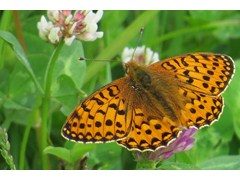
As winter starts to creep in and your thoughts turn to the year ahead, give a thought for the plight of our native pollinators too,writes STRI Ecological Consultant, Sophie Vukelic.
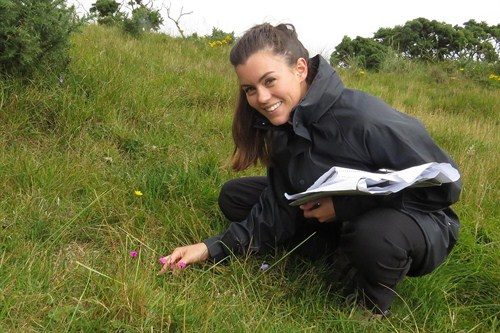
These insects, including bees and butterflies, are a vital part of our environment but are sadly reducing in numbers. Pollinating insects maintain the ecology of any golf course and, by cross pollinating flowers, contribute to the health of the local environment in which golf is played. Syngenta are keen to encourage every golf club to create appropriate habitat, protect and conserve existing habitats and, importantly, enhance and extend the connectivity of flower rich grasslands to support these insects.
So, why not start to think about transforming your golf course by introducing Operation Pollinator areas - a stunning and wildlife-enhancing addition on any golf course!
It is no secret that many pollinating insect species have been in decline over the last 40 years - with some now in a precarious position. So let's all do our part to help reverse the decrease and see more of these fantastically important creatures. The good news is that, in recent years, some bumblebee species have shown marked increases in population numbers, which demonstrates that positive action for pollinators can have results.
STRI is available to help individual clubs deliver pollinator rich habitat without losing sight of the value of our native grasslands. But for now, the following pointers might help you along your planning route for next year…
Firstly, choose a suitable area, this may be around the back of a tee, out of play rough, or along a woodland edge - the possibilities are almost endless; see the Operation Pollinator Guidelines for further ideas.
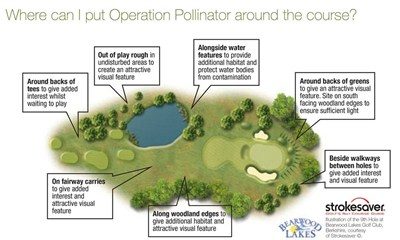
Before rushing into anything, make sure that you understand the wildlife that already utilises the chosen area. Have a survey carried out if you are unsure whether converting from rank grassland to an open wildflower meadow will disturb any protected species. It may be that the area you wish to alter is inhabited by a healthy population of field voles which provide a mighty feast for passing barn owls, for example. If the area you have chosen already provides substantial wildlife benefits, see if you can find an alternative more appropriate patch of land.
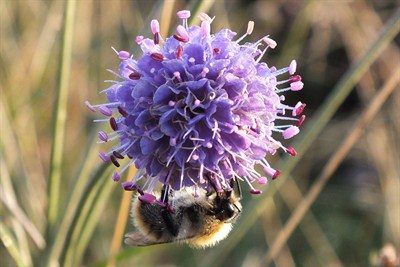
So, now you have decided where your Operation Pollinator area will be, what next? As most of you know, and will have already done this year if you are hoping to have wildflower areas blooming in 2016, the next step is cutting, collecting, possibly applying Rescue, and scarifying. Time is of the essence for these intensive regimes and so should only be carried out either in early spring, to avoid ground nesting birds, or in late summer/early autumn.
For successful wildflower establishment, gaps need to be created through either rigorous scarifying or autumn/winter grazing with livestock. Aim to generate 40% bare ground (or 60% in really rank, coarse grasslands) with exposed soil for seeds to readily germinate in. You may have yellow rattle which will give you a helping hand in creating gaps.
To sow or not to sow? That is the question… Depending on the type of grassland, you may not need to sow any seeds to produce a beautiful wildflower area. Calcareous and acid grasslands will more than likely have a thriving seed bank which can be brought to life by the above management regimes, or another option is to use seed collected from on course. Those working on relatively new courses or ones that have had a numerous changes may need to purchase a seed mix.
Choose a mix with a good variation of colours and flowering times, ideally flowering through spring, summer and autumn - but avoid rarities, which can be difficult to establish and keep! Remember that there's no need for a wildflowerandgrass seed mix if the grasses are already there - they just need to be managed accordingly. Also, Avoid plants with double or multi-petalled flowers which prevent insects from accessing pollen or nectar.
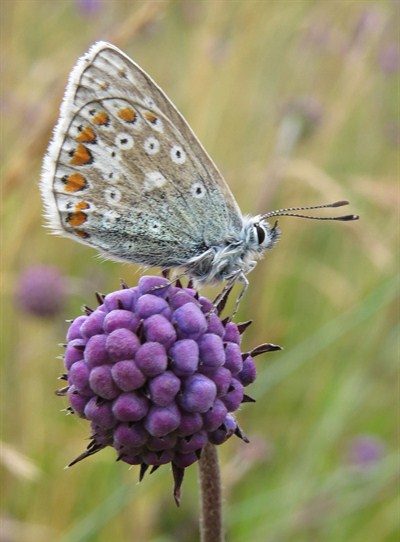
Springtime is not ideal for sowing perennial species seeds, so perhaps think about sowing at half rate, and sowing again in September. Annuals, such as cornflowers and corncockles, can be added if you are wanting an immediate result to show to members as well as providing an instant pollen and nectar resource for pollinators, but these should be kept to a minimum.
Now you have planned for next year and know what to do, there's an endless list of things you could be doingright now, especially during the winter months, often when work on the course begins to slow down. Why not get planting spring flowering bulbs around the clubhouse, choosing purple flowering plants for bees.
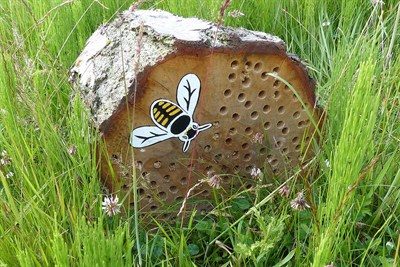
Maybe construction is more your thing. Many pollinating invertebrates that you wish to welcome on the course, such as bumblebees and butterflies, need somewhere to hibernate over winter so think about constructing hibernacula for them using materials found around the greenkeeping facilities.
Finally, use the winter months to network to find out what others are doing and share your ideas. Social media has advanced immeasurably over the past five years and it is now easier than ever to interact and gain experiences from people from all over the world. Communication is also key for getting members involved; ecological success is an ideal topic for blogging, which many greens staff are already doing very successfully.
If you are uncertain about choosing the right seed mix, how to build hibernacula's or any of the above mentioned tasks, do feel free to contact us at STRI. We would be more than happy to help to set you on your way. Nature is our passion here in the Ecology and Environment Department; we hope it is yours too. Find out more about what we do or get in contact through our website www.stri.co.uk or send me an email at: sophie.vukelic@stri.co.uk
